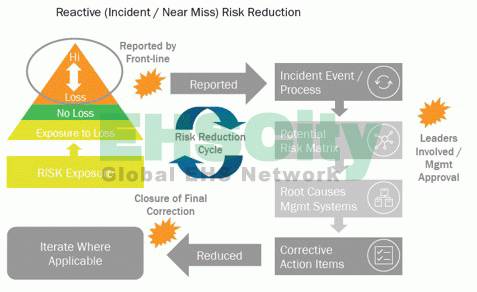正文
With such a vast data set from both the outcomes and the work
practice behaviors, these companies created a unique opportunity not only
for themselves but also for anyone in the industry who is interested
in finding the real leading indicators of performance – those
activities, practices, factors, conditions, etc. – that are practically
measurable and are proven to have a mathematical relationship to loss outcomes.[DD1]
Drawing Leading Data from Lagging Events
It has become common to find companies that have implemented an enterprise-wide incident database
to collect data resulting from the outcomes of incidents. However,
some companies also are executing corporate-wide incident management
process improvement projects along with an information system that not only collects incident data, but also enables/facilitates each major step of the business process.
As depicted in Figure 1 below, applying a risk-reduction solution for
managing incident/near-miss events enables the full event life cycle –
from front-line worker reporting events to leadership involvement and
the remediation of action items – of the business process.
Sphera

Figure 1
By comprehensively facilitating the entire risk-reduction cycle
business process, the various levels of the workforce simply are
carrying out the routine incident/near-miss work practice using a
business process automation (BPA) tool. However, the byproduct of
facilitating each major step of all near-misses and incident events on
an integrated software platform is the ability to practically draw
measurements from both the incident/near-miss event outcome data and the
data reflecting the workers’ interaction with each step of those
business processes.
By analyzing the business process data to study the organizational
treatment of these lagging events, leading metrics such as the
percentage of the workforce involved in near-miss reporting, the ratio
of near-miss to high-consequence reports, the rate of leadership participating in nonmandatory events, consistency of manager response to key steps, and many other potential Leading Indicators of culture and leadership can be created.

















